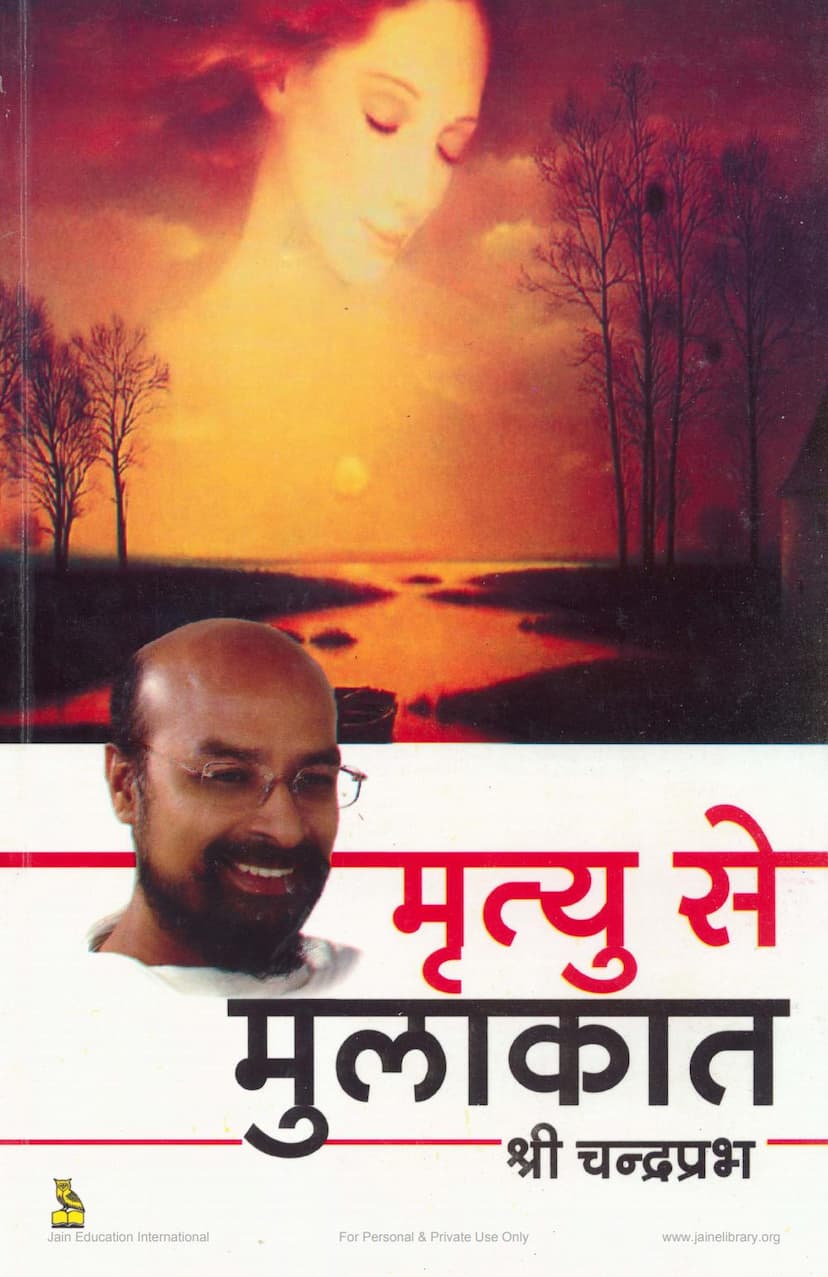Mrutyu Se Mulakat
Added to library: September 2, 2025

Summary
Here's a comprehensive summary of the Jain text "Mrutyu Se Mulakat" by Chandraprabhsagar, based on the provided pages:
Book Title: Mrutyu Se Mulakat (A Meeting with Death) Author: Shri Chandraprabhsagar Publisher: Pustak Mahal
Overview: "Mrutyu Se Mulakat" is a spiritual discourse by Shri Chandraprabhsagar, presented as an interpretation of the Kathopanishad. The book aims to demystify death, which is often a source of fear and anxiety. Instead of viewing death as a terrifying end, the author proposes it as a natural culmination of life, a "meeting" that, if understood correctly, can lead to a more meaningful and fearless existence. The book emphasizes that the quality of one's life directly influences the nature of their death and the subsequent journey.
Key Themes and Concepts:
- Death as a Natural Conclusion: The book asserts that death is not inherently frightening, but rather an "epilogue to life." It's the inevitable outcome of the life lived. A life lived with peace and purpose leads to a peaceful transition, while a life filled with stress and negativity leads to a difficult one.
- The Kathopanishad as a Guide: The central framework of the book is the Kathopanishad, which narrates the dialogue between the curious boy Nachiketa and Yama, the god of death. Nachiketa's quest for understanding mortality and the nature of the soul is presented as a path for readers to engage with death.
- Encountering Death Fearlessly: The primary goal of the book is to transform the reader's perception of death from a terrifying shadow to a benevolent guide that helps complete the journey of life. By understanding death, one can live life with greater purpose and fearlessness.
- The Importance of a Guru and Inquiry: The text highlights the role of a guru in spiritual growth and understanding. Nachiketa's quest is driven by his deep curiosity ("Jigyasa"). The book encourages readers to cultivate this spirit of inquiry to seek true knowledge.
- The Essence of Vedanta and Upanishads: The author explains that the Upanishads, particularly the Kathopanishad, are profound scriptures that reveal the "amrit" (nectar) for those seeking spiritual liberation. They are seen as the foundation of Indian spiritual thought.
- Beyond Bookish Knowledge: The book differentiates between worldly knowledge (academics) and spiritual knowledge, emphasizing that true spiritual understanding comes from guidance and practice under a spiritual master. It's not just about reading scriptures but internalizing their wisdom.
- The Symbolism of "Om": The "Om" (Aum) is presented as the most sacred and potent syllable in Indian culture, representing the ultimate reality (Brahman). Its chanting, remembrance, and meditation are considered pathways to spiritual connection. The author stresses the all-pervasiveness of "Om" and its significance across various spiritual traditions.
- The Guru-Shishya Relationship: The sanctity and responsibility of the guru-disciple relationship are explored. Both must be aligned in their pursuit of spiritual knowledge. The guru's role is to guide the disciple, and the disciple's role is to have faith and dedication.
- Yajna (Sacrifice) and Dana (Charity): The text delves into the importance of Yajna and Dana as crucial stages in spiritual practice. It emphasizes that true sacrifice and charity involve giving one's best, not just what is left over or useless. The story of Uddalaka and Nachiketa's father's flawed Yajna serves as a cautionary tale.
- The Nature of True Giving: The author stresses that true giving is selfless and comes from a place of abundance and compassion, not obligation or a desire for reward. The examples of Karna and Bali highlight the spirit of selfless donation.
- The Power of Faith and Devotion: The book illustrates how faith and devotion can lead to extraordinary outcomes, as seen in Nachiketa's unshakeable resolve and the eventual transformation of people through spiritual teachings.
- Seeking Inner Peace and Self-Realization: The core message revolves around understanding that true happiness, peace, and self-knowledge are found not in external pursuits but within oneself through introspection, meditation, and the guidance of a guru. The concept of "App Deepo Bhava" (Be a lamp unto yourself) is central.
- The Path of "Shrey" vs. "Prey": The author distinguishes between "Prey" (what is pleasant and immediately gratifying) and "Shrey" (what is ultimately beneficial and leads to spiritual growth). Wisdom lies in choosing "Shrey" over "Prey."
- Mind Control and Discipline: The text highlights the crucial role of controlling the mind, which is likened to an unruly horse. Through practices like meditation and disciplined living, one can gain mastery over the mind, transforming it from an enemy to a powerful ally.
- The Five Stages of Self-Realization: The book outlines a path towards self-realization, emphasizing the importance of listening to true masters, internalizing their teachings, contemplating them with discernment, putting them into practice, and ultimately experiencing the divine.
- Death as an Opportunity for Liberation: Ultimately, "Mrutyu Se Mulakat" suggests that by understanding the nature of death and the soul, one can face it with equanimity and even embrace it as a transition to a higher state of being, rather than fearing it.
Structure and Tone: The book is presented as a series of discourses, likely derived from spiritual talks given by Shri Chandraprabhsagar. The language is accessible and spiritual, aiming to guide the reader towards introspection and a deeper understanding of life, death, and the self. It encourages a shift from seeking external validation and gratification to finding fulfillment within.